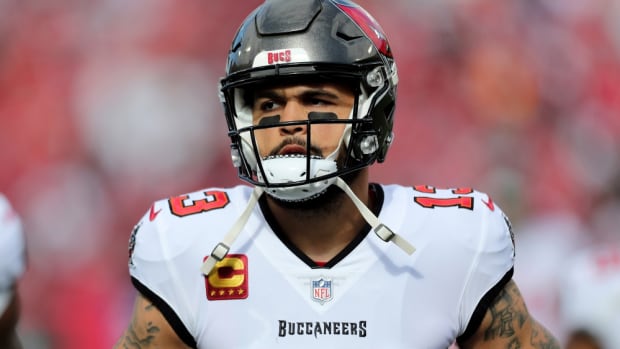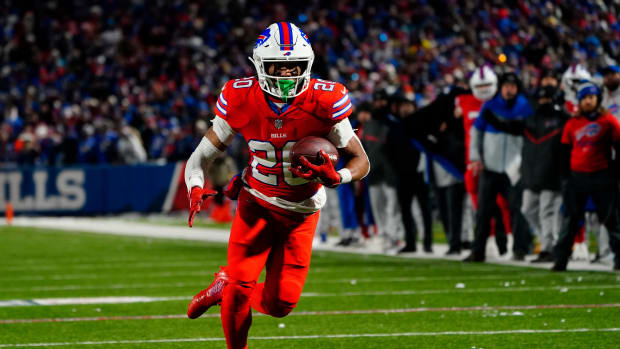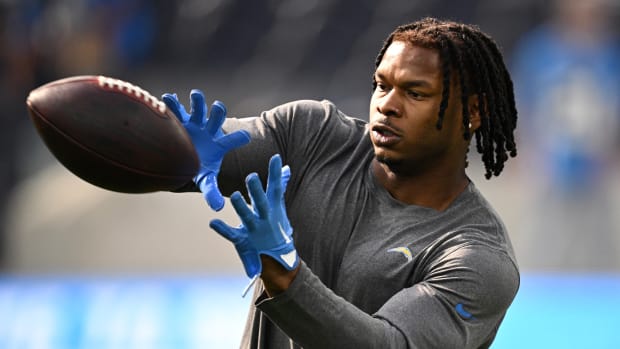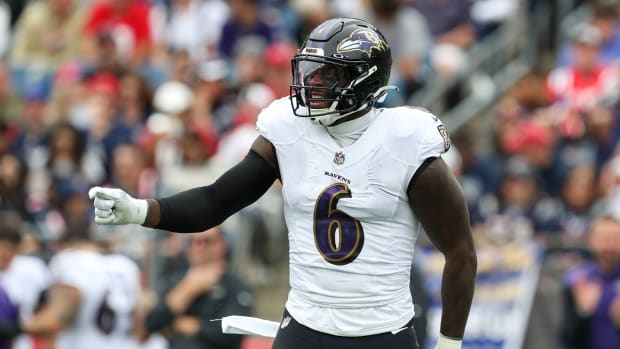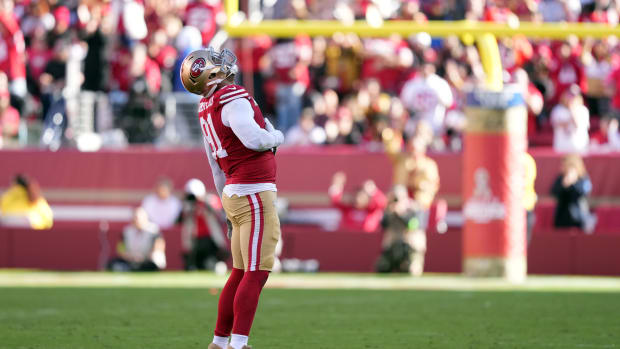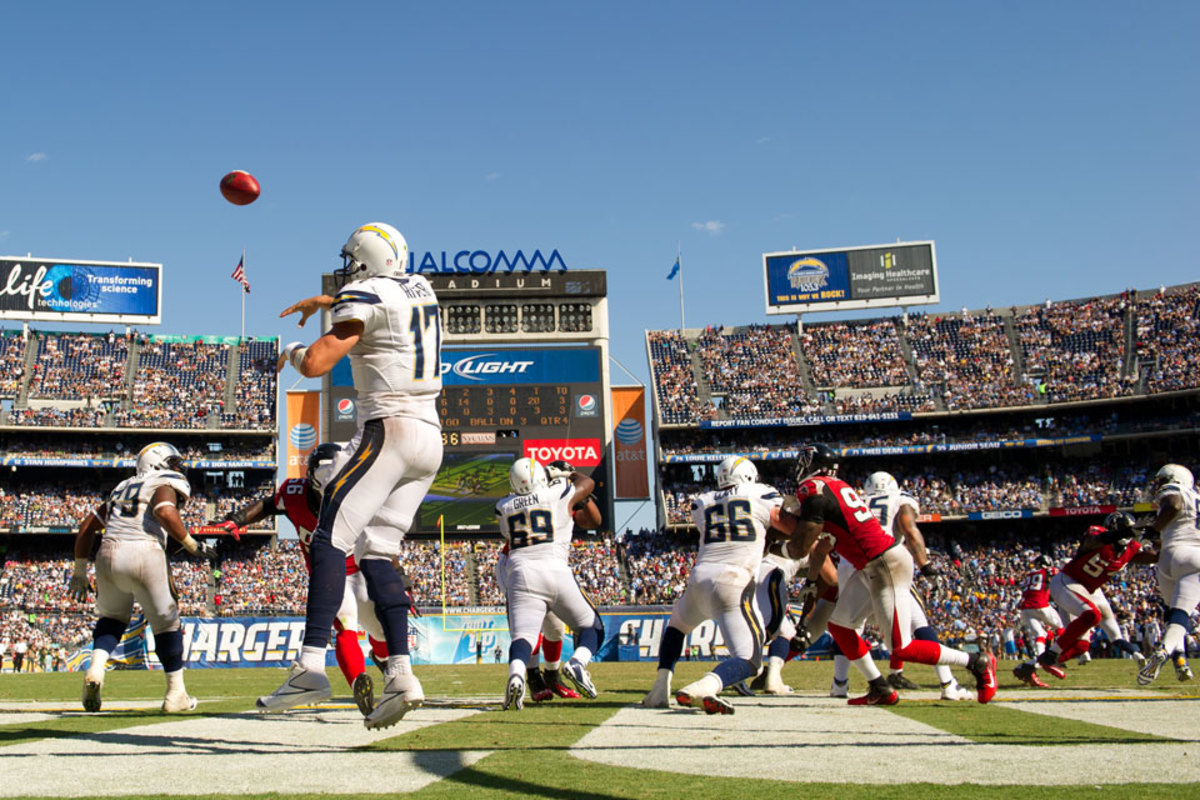
Chargers Preview: Trial and Errors
For the last three years, the San Diego Chargers had been like the post-Michael Scott Office: disappointing, but not bad enough to dismantle and start over. That changed for both programs this past spring. A few months before the curtain closed on one of the great television comedies, Chargers president Dean Spanos finally fired head coach Norv Turner and general manager A.J. Smith.
Their terminations seem like a referendum on Turner and Smith rather than a redirection of the franchise because the new leaders appear to share many of their predecessors’ philosophies. Head coach Mike McCoy is, like Turner, an offensive savant. And new general manager Tom Telesco comes from the Bill Polian school, which Smith got at least a taste of early in his career, as his former mentor, John Butler, worked under Polian in Buffalo. If Telesco subscribes to the mantra Polian taught in Indianapolis, he’ll be a strong proponent of building through the draft—just like Smith was.
So far, the Chargers’ roster remains largely the same. Many of San Diego’s key players, including 31-year-old quarterback Philip Rivers, are still in their prime. And this is a team that has posted mediocre but not deplorable win totals of nine, eight and seven over the past three years. The first-time GM may find that a simpler remodeling project here is more practical than an outright rebuilding project.
Unlike The Office, the Chargers’ decline has not resulted from their main character leaving. Instead, their main character has simply stumbled. Rivers has turned the ball over 47 times over the last two years (fourth most in the league) and seen his yards per attempt drop from 8.7 in 2010 to 7.9 and 6.8 in each of the past two seasons. These statistical black marks have largely stemmed from inaccurate throws and poor decision-making under pressure.
To be fair, Rivers’ transgressions are not the only reason for San Diego’s slide. And the quarterback still has made some of the extremely impressive, strong-armed pocket throws that originally defined him. Nevertheless, he is the one standing trial in 2013. If he plays well, he’ll stick around. If he doesn’t, he’ll be released, and Telesco will almost certainly hit Control-Alt-Delete twice on this roster.
OFFENSE
Many believe Philip Rivers was put on trial once Telesco decided not to restructure the remaining three years of the quarterback’s contract. A restructuring would have saved the Chargers some much-needed cap space in 2013, but it would have carried new bonus money, making Rivers far more expensive (in cap dollars) to cut moving forward. But an even more important development occurred when Mike McCoy installed a spread offense. The biggest gold stars on McCoy’s resume are his last two years as offensive coordinator in Denver. In 2011 he rewrote his entire playbook midseason to reflect a staunch run-first approach after Tim Tebow replaced Kyle Orton. In 2012 McCoy rewrote his playbook again to accommodate Peyton Manning.
Chargers coach Mike McCoy. (Gregory Bull/AP)
The man who earned a head coaching job largely because of the masterly way he molds his system around his quarterback has inherited a classic deep-dropping, downfield pocket passer in Rivers. Yet he’s installing a quick, timing-based spread scheme that’s almost the opposite of what’s familiar to Rivers.
If McCoy thought Rivers had no shot in this system, he would not have introduced it. (Not all of it, anyway.) The coach has said he thinks Rivers can complete 70% of his passes in the new scheme. That might be a tad optimistic, but it’s plausible.
Of course, there’s always a learning curve when systems change. And McCoy will bend and accommodate Rivers in certain areas if need be. In the big picture, installing a spread offense is the right thing to do. Quick, timing-based horizontal passing attacks are cutting-edge in today’s NFL. And, looking at the rest of San Diego’s personnel, this is a much better fit than Turner’s vertical passing game, as respected as it was.
A big reason the Chargers offense faltered is they didn’t have enough quality linemen to block up the deeper drop-back timing that Turner’s system demanded (49 sacks allowed in 2012, second most in the AFC). As a franchise, they were completely unprepared in 2011 for the sudden declines of left tackle Marcus McNeil and left guard Kris Dielman. The Chargers still haven’t adjusted.
After suffering through the likes of Jared Gaither and the undrafted Mike Harris at left tackle last season, the Chargers signed aging ex-Steeler Max Starks, hoping he can hold up at least one year. If he can’t, they’ll roll the dice with King Dunlap, a lumbering 6-9 31-year-old who, in five years with the Eagles, never could hone his technique well enough to stay on the field. (Dunlap actually got a bulk of the first team reps early in camp.) Inside, Dielman’s spot will be filled by journeyman Chad Rinehart. But if they truly believed Rinehart was up to the task, the Chargers would have given the free-agent pickup more than a one-year contract.
Instead of trying to give Rivers more time to throw, the Chargers will, by design, give him less time but more options.
The other side of San Diego’s line has also been remade, though not necessarily upgraded. Telesco spent the 11th pick on Alabama road-grader D.J. Fluker. However, Fluker’s right tackle position was the one spot that was not overtly weak on this line. Incumbent Jeromey Clary had never been anything special, but he’s someone coaches could trust. Now, Clary has to slide to right guard, where he’ll almost surely be a step down from Louis Vasquez, who signed with the division-rival Broncos in free agency. At center, Nick Hardwick can still get by on craftiness and fundamentals, though if there were a more potent backup than Colin Baxter on the roster, the soon-to-be 32-year-old Hardwick would probably be looking at a competition in training camp.
It’s easy to criticize Telesco for pouring middling resources into the broken offensive line, but there’s a reason he did it this way. First, he did not inherit much cap space. Second, it was a weak veteran market for offensive linemen. Third, five offensive linemen were off the board before San Diego’s first pick. Fourth, Telesco might realize that the beauty of a quick, timing-based spread system like McCoy’s is that you don’t really need a good offensive line. You can save money and get by with an average front.
In a spread, the aim is often for the quarterback to get rid of the ball early in the down. Instead of trying to give Rivers more time to throw, the Chargers will, by design, give him less time but more options. Which means it’s less important that their line thrive and more important that their receivers win quickly off the line of scrimmage.
It will be interesting to see how Malcom Floyd does in this system. In Turner’s scheme, Floyd’s lankiness and verticality were great for winning jump balls on the outside. He isn’t quite a precision route runner, but he is extremely good at establishing initial separation in his release off the line (especially for someone his size). That will probably be enough.
Opposite Floyd, Danario Alexander was a precision route runner before suffering yet another major knee injury (ACL). The ex-Ram joined this squad last October and, in Weeks 9-15, scored five touchdowns and averaged 92.5 yards per game. Now, he leaves a void at the No. 2 spot. It’d be great if 2012 free agent bust Robert Meachem could somehow rise up and fill it.
Most likely, the inside receivers will ultimately determine the effectiveness of this spread. Vincent Brown should be completely healthy after missing essentially all of last season with a foot injury. He showed compelling all-around smoothness as a rookie in 2011. There’s also third-round rookie Keenan Allen, who fell in the draft in part due to injury concerns. Allen has reminded some, including Telesco, of Reggie Wayne coming out of Miami. He showed an uncommon ability to disguise routes at Cal.
Tight end Antonio Gates. (Peter Read Miller/SI)
Not to be forgotten is Antonio Gates. Foot problems and Father Time have drained a lot of the eight-time Pro Bowler’s juice, but Gates is still capable of winning most one-on-one matchups between the numbers. The Chargers are counting heavily on him; their backup tight ends are John Phillips, who had 30 total catches in his four years with the Cowboys, and Ladarius Green, who barely saw action as a fourth-round rookie last year.
A spread system won’t only affect the passing game—it will also allow running back Ryan Mathews to rely more on his outside speed and quick lateral agility. Obviously, Mathews must finally stay healthy and take care of the football. If he can’t, the Chargers will have to rely on newcomer Danny Woodhead, who is tailored for a spread system but can only handle a situational load. Ronnie Brown would be the other option. In fact, don’t be surprised if the methodical but reliable ninth-year veteran once again takes snaps away from even a healthy Mathews, as Brown is so much smarter in the passing game.
DEFENSE
Essentially, Telesco and McCoy are betting that the same defensive approach from last year can work as long as the secondary plays better. With this in mind, they chose to retain defensive coordinator John Pagano and bring in new cornerbacks. Gone are Quentin Jammer and Antoine Cason, whose struggles compelled Pagano to mostly stay with conservative Cover 3 concepts and eschew the creative man-based blitzes that make his hybrid 3-4/4-3 scheme unique. Ex-Jaguar Derek Cox and third-year pro Shareece Wright are now at the corner spots.
But there’s nothing impressive about this new cornerbacking duo. Cox was humiliated in one-on-one scenarios against elite receivers on multiple occasions last year. Wright, a former third-round pick, couldn’t even push his struggling predecessors for playing time.
Of equal concern is San Diego’s depth (or lack thereof) at this position. Disappointing Saints castoff Johnny Patrick will compete with fifth-round rookie Steve Williams for nickel duties. Don’t be surprised if neither wins the job and the Chargers instead slide new safety Marcus Gilchrist back to his original nickel slot. In that case, they’d bring either backup safety Darrell Stuckey or Brandon Taylor off the bench. This is probably the best scenario, though the problem is many of Pagano’s best nickel blitz designs require man coverage. Cox has the movement skills to play man, and Wright—in very limited samples—was solid in relying on his lankiness as a man-defender last year. But overall neither has consistently fulfilled his man-to-man potential. And what about Gilchrist? If the coaching staff was that confident in his man coverage, they would have let him compete for a starting outside corner job.
Safety Eric Weddle. (John W. McDonough/SI)
The saving grace for this secondary is that safety Eric Weddle has the versatility, playmaking prowess and football IQ to erase other people’s mistakes. He can outwit offenses before and after the snap.
Weddle did not play in the box as much as usual last season, but he may be needed in more of Pagano’s blitz packages now that hybrid edge defender Melvin Ingram is possibly out for the season (ACL). Ingram had only one sack last season, but he showed a diverse assortment of explosive traits that undoubtedly would have been the fulcrum of San Diego’s attacks (especially with veteran Shaun Phillips now gone).
Because Larry English is fragile and unimaginative and Jarret Johnson, while great at setting the edge versus the run, is not necessarily feared as a pass-rusher, the Chargers had to go outside the organization to find Ingram’s replacement. They could have done much worse than Dwight Freeney. Yes, the longtime Colt is best cast as a 4-3 defensive end, but that doesn’t mean he can’t be a decent situational pass-rusher out of a two-point stance. Freeney’s sacks dropped to five last season, but on most weeks he was still extremely disruptive in his transitions from speed to power off the edge.
The Chargers, overall, still don’t have enough pass-rushing firepower to simply line up and go after the quarterback on a down-by-down basis. Pagano will have to manufacture pressure through his schemes. But that chore could be easier than expected given the athleticism he has along his three-man front line. Corey Liuget, a 2011 first-round pick, is blossoming into a stellar all-around force. He moves well in every direction and will command at least semi-regular double teams this season. Partnering with Liuget is Kendall Reyes, a second-rounder last year who is quick and knows how to use his hands. The Chargers are relying heavily on both ends this season, as their only experienced backup at that position is Jarius Wynn.
The dearth of experienced depth at end is nothing given the utter absence of experienced depth at nosetackle. The release of 33-year-old Antonio Garay saved the Chargers $5 million in cap space, but it also put all of their eggs in Cam Thomas’s basket. The fourth-year pro has emerged as a respectable ground-holder against the run, but he’s averaged about 24 snaps per game over his career. Can he hold up if that number increases?
Rounding out this defense are inside linebackers Donald Butler and Manti Te’o. Butler, when healthy, is an extremely underrated and instinctive hunter. Te’o will start right away and likely play all three downs. If his lack of speed becomes an issue against the pass, look for ex-Packer D.J. Smith, a forceful inside blitzer (at least before tearing his ACL last August), to get the nod.
TROTTER: Te'o Must Become His Own Man
SPECIAL TEAMS
Mike Scifres has not furthered his legacy since giving the greatest single postseason punting performance in history in the 2008 wild-card win versus Indianapolis. But that doesn’t mean he hasn’t still been an upper-tier punter. Kicker Nick Novak was successful on 18 of his 20 attempts last season, with the only two misses coming from beyond 50 yards. In the return game, Richard Goodman and Eddie Royal will get looks, though both could have trouble making the final roster.
BOTTOM LINE
If Rivers gets things together, the Chargers offense can be good enough for this team to compete for a wild card. Of course, that’s assuming the rest of the players take well to McCoy’s new system. The real concern is whether the defense is still good enough in the secondary to be the creative unit Pagano wants. All in all, we’re probably looking at too many ifs here.
Andy Benoit is diving deep into each team’s prospects for 2013. Read what he’s done so far.



































